The Pacific Northwest may be known for its gray skies and frequent drizzle, but its moist, temperate climate is a dream come true for many types of lush, vibrant flowers. With rich soil, mild temperatures, and plenty of rainfall, this region offers the perfect environment for certain blooms to thrive with minimal effort.
From the romantic charm of foxgloves to the bold colors of rhododendrons and the resilience of hellebores, many of these plants not only withstand rainy weather—but actually flourish in it. These flowers bring life, color, and beauty to gardens year-round, making them ideal for anyone looking to embrace the natural rhythm of the PNW climate.
Discover 23 rain-loving flowers that are perfectly suited for the Pacific Northwest and learn how to make your garden a vibrant haven—even under gray skies.
Rhododendron
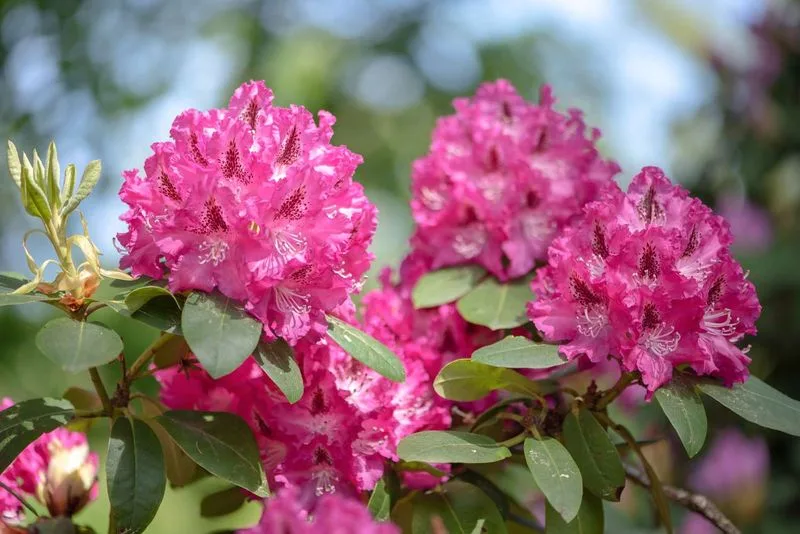
Rhododendrons are a staple in the Pacific Northwest, adding a burst of color to gardens with their stunning blossoms. These evergreen shrubs, known for their large clusters of flowers, thrive in the region’s acidic soil and mild temperatures. With blooms ranging from soft pastels to vivid pinks and purples, rhododendrons create a captivating display. Their ability to withstand wet conditions makes them perfect for rainy climates. Consider planting them in shady spots to mimic their natural woodland habitat. Their evergreen leaves provide year-round interest, ensuring your garden is lively even in the off-season.
Hydrangea

Hydrangeas, with their lush, rounded clusters of flowers, are a delightful addition to any garden. These blooms flourish in the moist climate of the Pacific Northwest, where they can absorb the ample rainfall to reach their full potential. Their color can vary from blue to pink based on soil acidity, offering gardeners a dynamic palette. Plant them in well-draining soil with partial shade to enjoy their vibrant display. The changing hues of hydrangeas throughout the season add a sense of wonder and anticipation, making them a favorite among garden enthusiasts.
Bleeding Heart
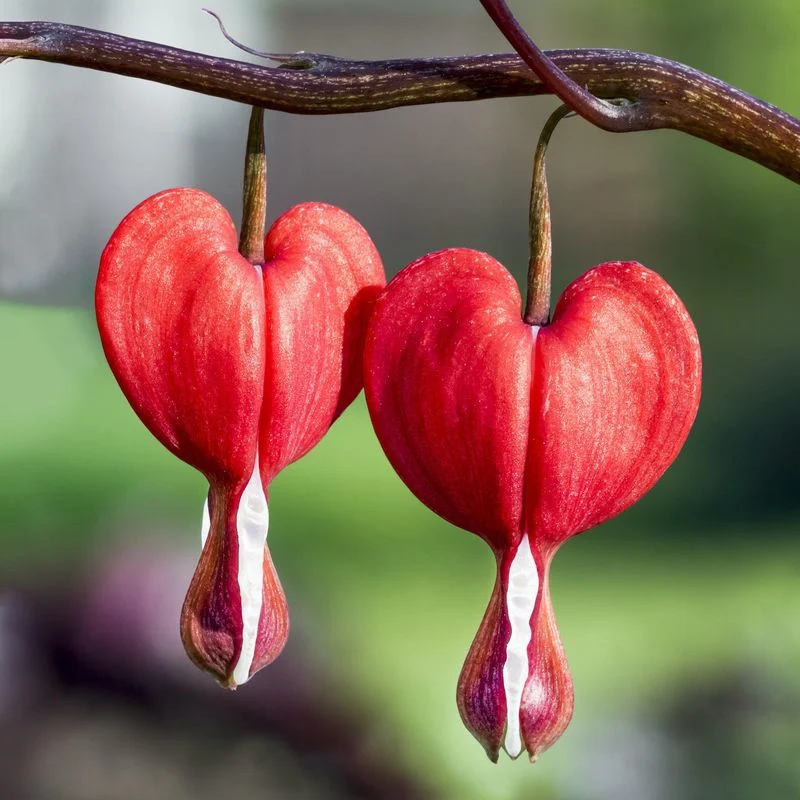
Bleeding hearts capture the imagination with their heart-shaped flowers that seem to spill over like teardrops. These charming perennials thrive in the damp, shady environments typical of the Pacific Northwest. Their unique blossoms appear in early spring, bringing a touch of romance to gardens. Plant them in well-draining soil enriched with organic matter to mimic their natural woodland settings. Their graceful arching stems and fern-like foliage create an elegant, soft texture that complements other shade-loving plants. A poetic symbol of enduring love, bleeding hearts make any garden feel enchanted.
Fuchsia
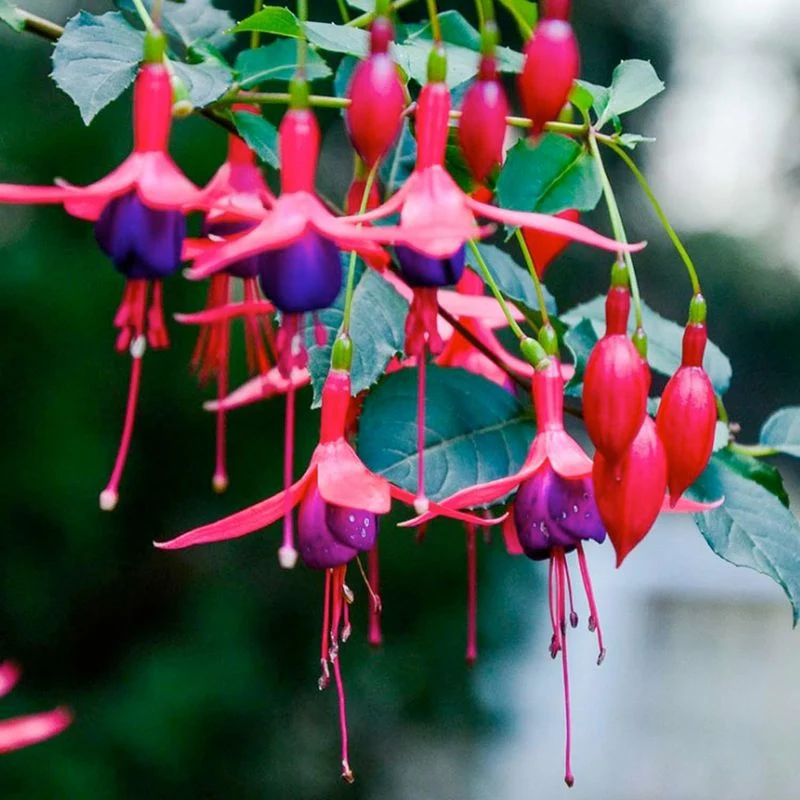
With their pendulous, bell-shaped flowers, fuchsias add a touch of whimsy and elegance to gardens. They thrive in the cool, moist conditions of the Pacific Northwest, where they can be grown in containers or hanging baskets. The vibrant pinks and purples of the fuchsia blossoms attract hummingbirds, bringing dynamic movement and life to your garden. These plants prefer partial shade and well-drained soil, making them versatile for various garden settings. Their continuous blooming throughout the season ensures a consistent splash of color, enhancing any outdoor space.
Camellia
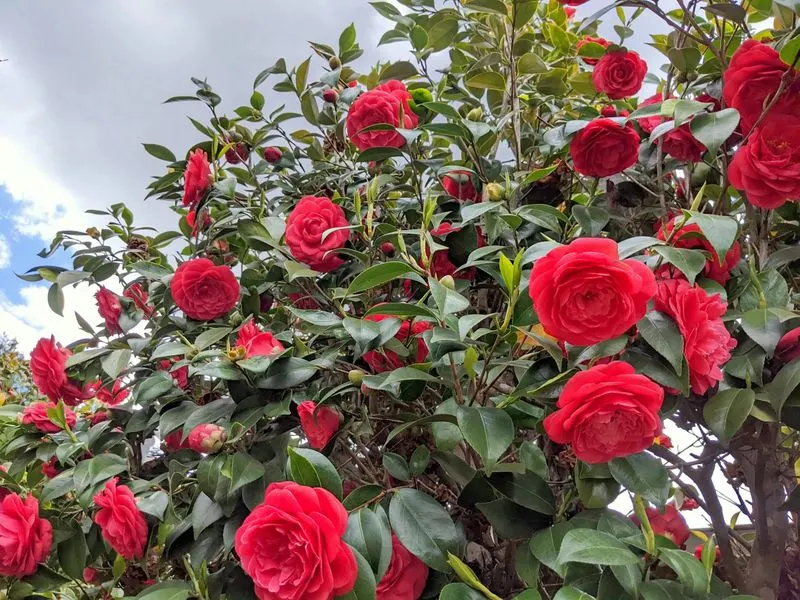
Camellias are admired for their glossy, evergreen leaves and profusion of blooms that brighten winter gardens. Their ability to flower in the cooler months makes them an invaluable asset to Pacific Northwest gardens. With varieties ranging from pure white to deep red, camellias can provide a serene or dramatic flair to your landscape. They thrive in acidic, well-drained soil and appreciate a sheltered spot to protect their blooms from heavy rain. Camellias also make excellent cut flowers, allowing you to bring their beauty indoors. Their resilience and elegance speak to their enduring appeal.
Hellebore

Often referred to as the “winter rose,” hellebores bring color to the garden when little else is blooming. These perennial flowers are well-suited to the Pacific Northwest’s rainy climate, displaying their delicate blooms from late winter to early spring. Their nodding flowers, in shades of white, pink, and green, provide an understated elegance. Plant them in shaded areas with rich, well-draining soil to enjoy their subtle beauty. Hellebores are deer-resistant, making them a practical choice for gardens in wooded areas. Their long-lasting blossoms make them a gardener’s favorite.
Astilbe
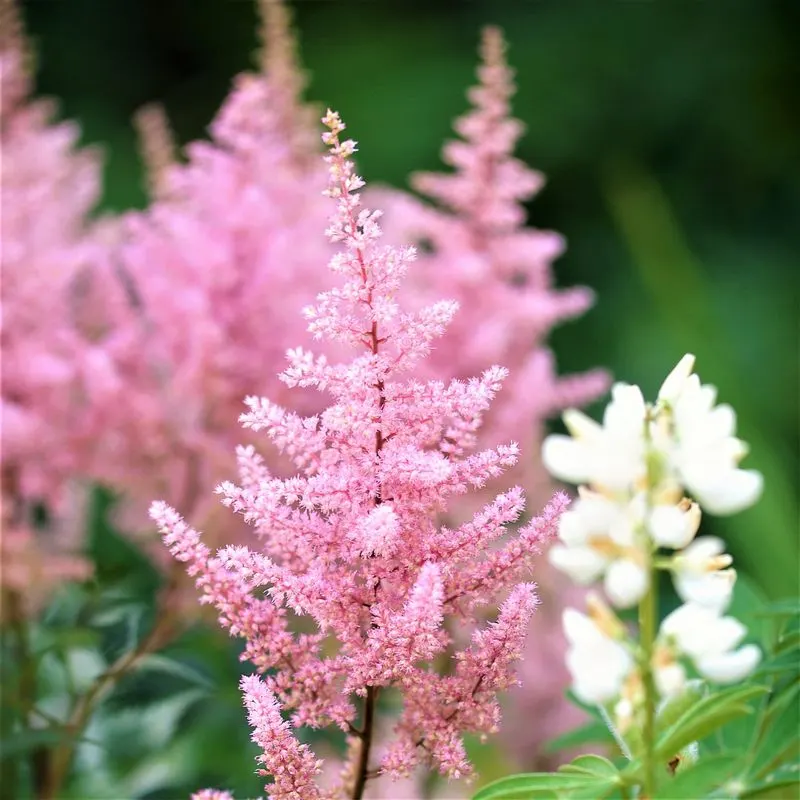
Astilbes add a touch of feathery texture to gardens with their plume-like flowers that sway gracefully in the breeze. Perfect for the Pacific Northwest’s cool, damp conditions, they thrive in shaded gardens with rich, moist soil. The vibrant blooms, ranging from white to deep red, add color and interest throughout the summer months. Astilbes are ideal for perennial borders or as a ground cover in shaded areas. Their fern-like foliage provides added texture, complementing other shade-loving plants. A favorite for its ease of care and striking appearance, astilbe is a garden staple.
Iris
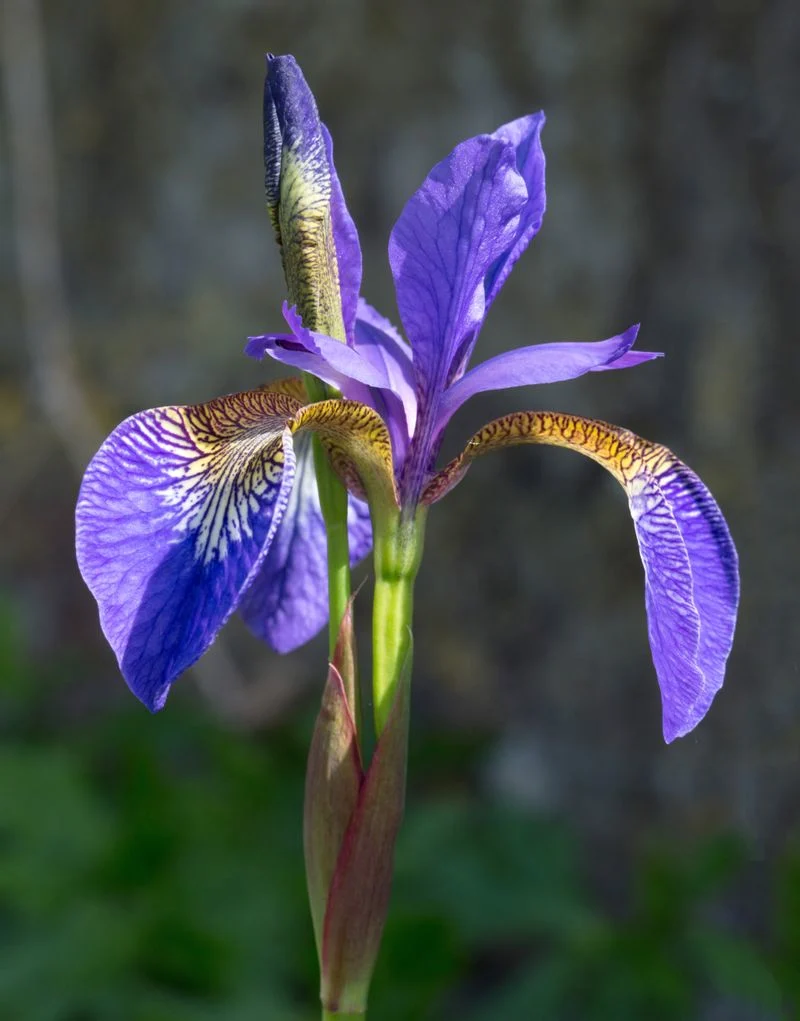
Irises, with their striking sword-like leaves and bold blooms, are a standout in any garden. They flourish in the Pacific Northwest, where the plentiful rain helps them thrive. Known for their diverse color range and intricate petal patterns, irises can be planted in sunny spots with well-draining soil. Their early summer blooms bring a refreshing burst of color, and their varied heights add structure to garden beds. For added interest, mix different iris varieties for a layered effect. Their beauty and resilience make irises a cherished choice for many gardeners.
Lily of the Valley

Lily of the valley enchants with its tiny, bell-shaped flowers that exude a sweet fragrance, filling the air with a sense of nostalgia. These shade-loving perennials are well-suited to the Pacific Northwest, where they thrive in the moist, shaded conditions under trees or shrubs. Their lush green foliage provides a lovely backdrop for the delicate white blooms. Plant them in well-draining soil and allow them to naturalize, creating a carpet of flowers over time. Their elegance and fragrance make lily of the valley a timeless addition to any garden setting.
Foxglove
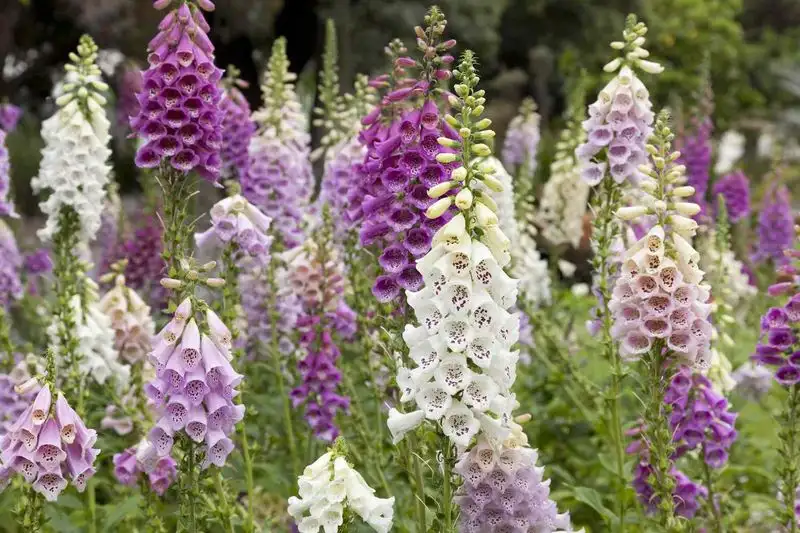
Foxgloves stand tall with their towering spires of tubular flowers, adding drama and height to gardens. They are perfectly suited to the Pacific Northwest’s moist climate, thriving in dappled shade and well-drained soil. The blooms, in shades of purple, pink, and white, attract pollinators like bees and hummingbirds. Their biennial nature means they bloom in their second year, but they often self-seed, creating a natural cycle of growth. Foxgloves bring a sense of wild beauty to gardens, making them a favorite for cottage-style landscapes.
Japanese Anemone
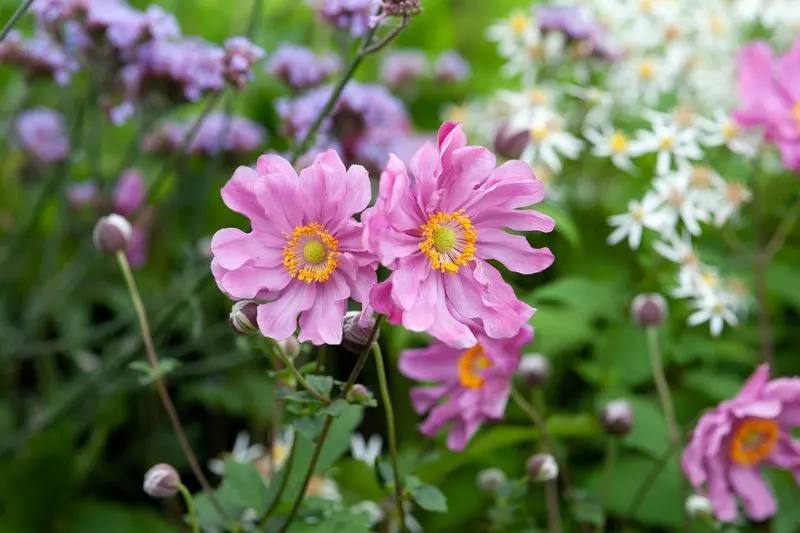
Japanese anemones, with their elegant blooms and wiry stems, are a late-season delight. They thrive in the Pacific Northwest’s cool, moist conditions, adding color to gardens from late summer into fall. The flowers, available in shades of white, pink, and lavender, sway gently in the breeze, creating a sense of movement. Plant them in well-draining soil enriched with organic matter for best results. Their ability to spread and naturalize makes them a wonderful choice for perennial borders. Japanese anemones bring a touch of grace and beauty to fall gardens.
Crocus
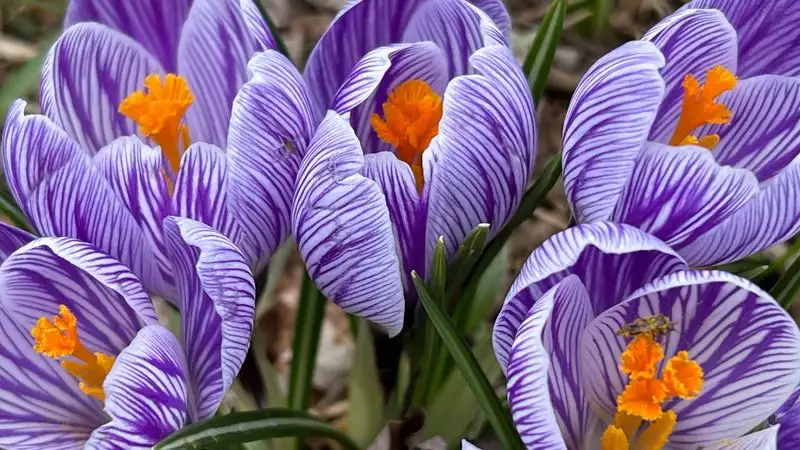
Crocuses herald the arrival of spring with their cheerful blooms that peek through the last remnants of winter. These hardy bulbs are perfectly suited for the Pacific Northwest, where they thrive in well-draining soil and full sun or partial shade. With their vibrant colors ranging from purple to yellow, crocuses create an eye-catching display. Plant them in clusters for a natural look, and watch as they spread over the years. Their early blooms provide an essential source of pollen for bees, making them a valuable addition to any eco-friendly garden.
Primrose
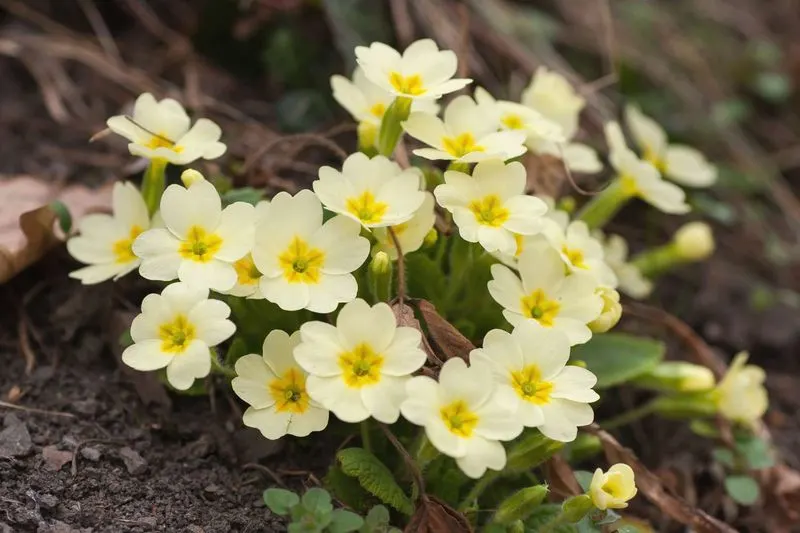
Primroses bring a splash of color to gardens with their cheerful blooms that emerge in early spring. These perennials thrive in the Pacific Northwest’s mild, rainy climate, where they flourish in well-draining soil and partial shade. Available in a wide range of colors, from soft pastels to vibrant hues, primroses offer versatility in garden design. Their compact form makes them ideal for borders, rock gardens, or containers. Plant them en masse for a dramatic effect, and enjoy their long-lasting blooms that brighten even the rainiest of days.
Wild Ginger
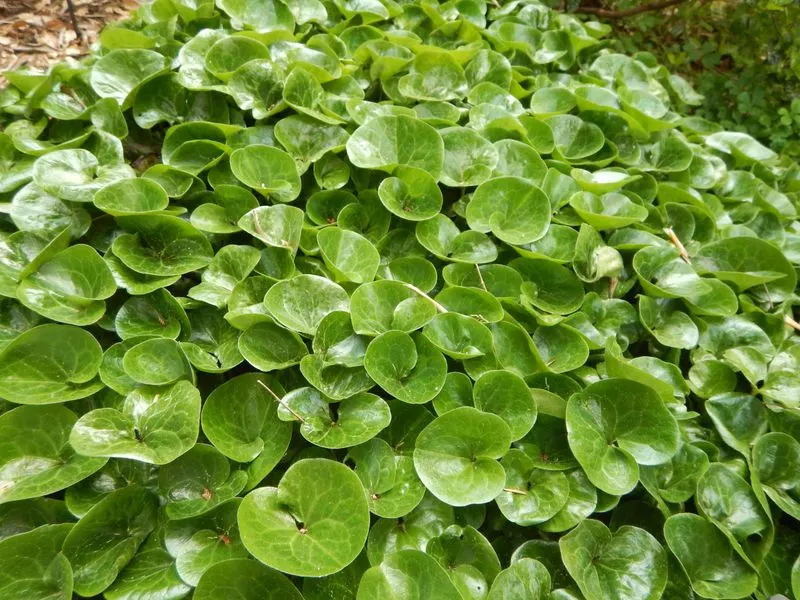
Wild ginger, with its heart-shaped leaves and hidden blooms, is a ground cover that brings a touch of mystery to gardens. This shade-loving perennial is well-adapted to the Pacific Northwest’s rainforest-like conditions, where it thrives in moist, well-draining soil. The small, brownish flowers are often overlooked, but the lush foliage provides a rich green carpet. Plant wild ginger under trees or along shaded borders for a naturalized look. It’s a low-maintenance choice that helps suppress weeds while adding texture and depth to garden landscapes.
Trillium
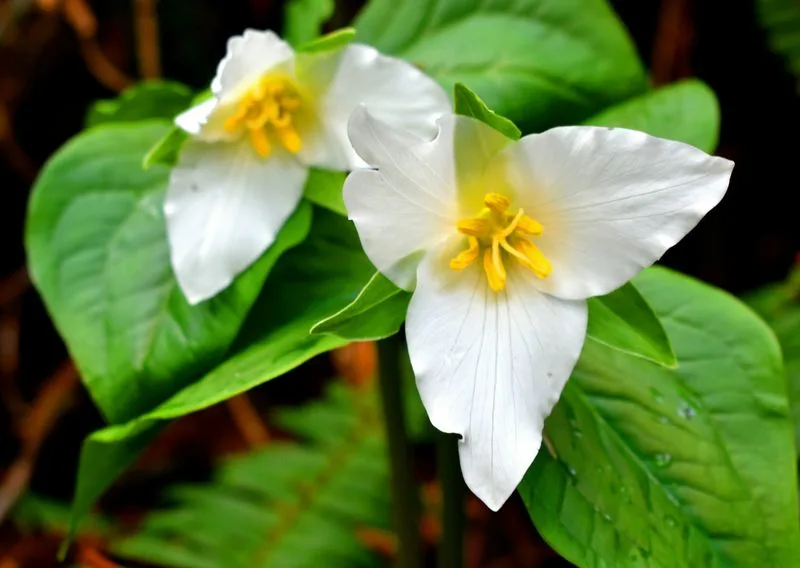
Trilliums, with their distinctive three-petaled flowers, are a woodland treasure in the Pacific Northwest. These perennials thrive in the damp, shaded conditions of forested areas, where they bloom in early spring. Their understated beauty adds a touch of elegance to naturalized garden settings. Plant trilliums in rich, well-draining soil and allow them to establish over time, as they can be slow to mature. Their presence signals a healthy, thriving ecosystem, making them a valuable addition to any woodland garden. Trilliums are a true symbol of the region’s natural beauty.
Columbine

Columbines, with their delicate, spurred flowers, bring a touch of whimsy to gardens. These perennials are perfectly suited to the Pacific Northwest, where they thrive in well-draining soil and dappled sunlight. The blooms, available in a variety of colors, including red, yellow, and purple, attract hummingbirds and butterflies, adding life and movement to your garden. Columbines are versatile, making them ideal for cottage gardens or naturalized settings. Their unique form and vibrant colors make them a charming addition to any landscape, captivating gardeners and wildlife alike.
Solomon’s Seal
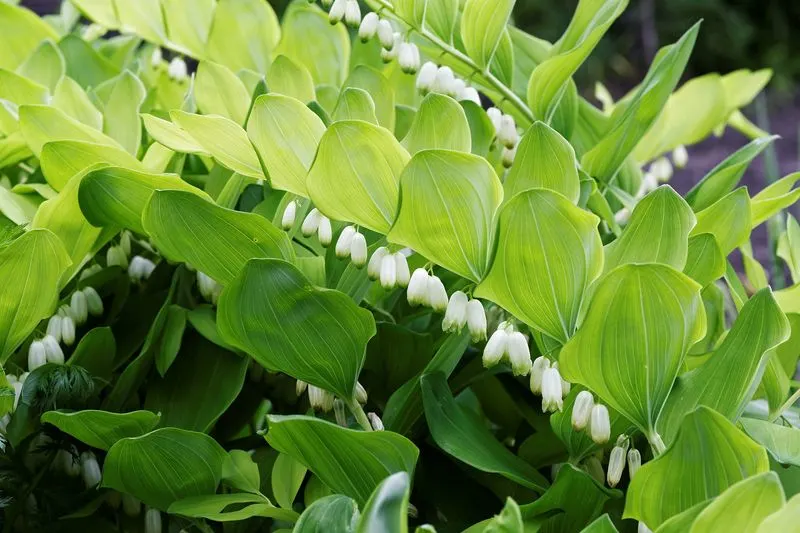
Solomon’s seal, with its graceful arching stems and hanging white flowers, is a shade garden favorite. This perennial is well-adapted to the moist, shaded conditions of the Pacific Northwest, where it thrives in rich, well-draining soil. The small, bell-shaped flowers dangle delicately from the stems, adding a touch of elegance. In the fall, the foliage turns a golden yellow, providing seasonal interest. Plant Solomon’s seal in woodland gardens or shaded borders for a naturalized look. Its understated beauty and easy maintenance make it a beloved choice among gardeners.
Snowdrop
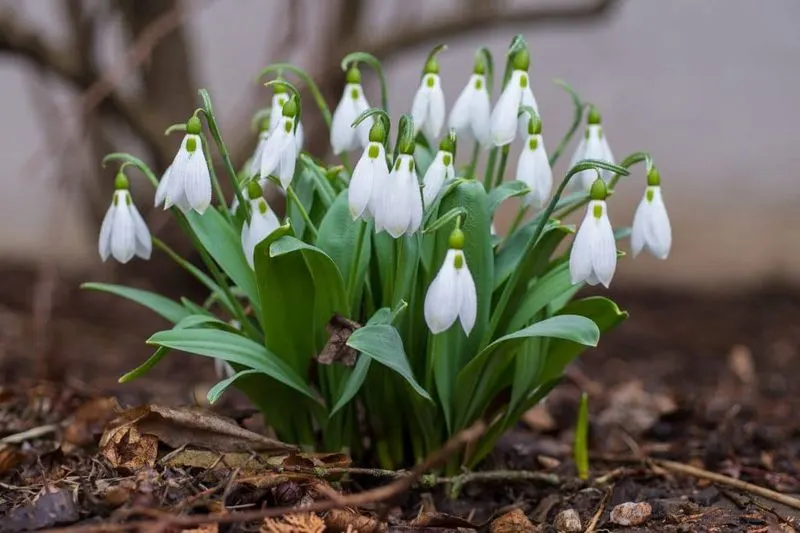
Snowdrops are among the first flowers to bloom in late winter, signaling the promise of spring. These delicate bulbs are well-suited to the Pacific Northwest, where they thrive in cool, moist conditions. Plant them in well-draining soil and partial shade for best results. Snowdrops’ nodding white blooms create a serene display, especially when planted in clusters. Their early flowering provides much-needed nectar for bees emerging from hibernation. Despite their small size, snowdrops have a significant impact, bringing a sense of hope and renewal to gardens at the end of winter.
Hosta
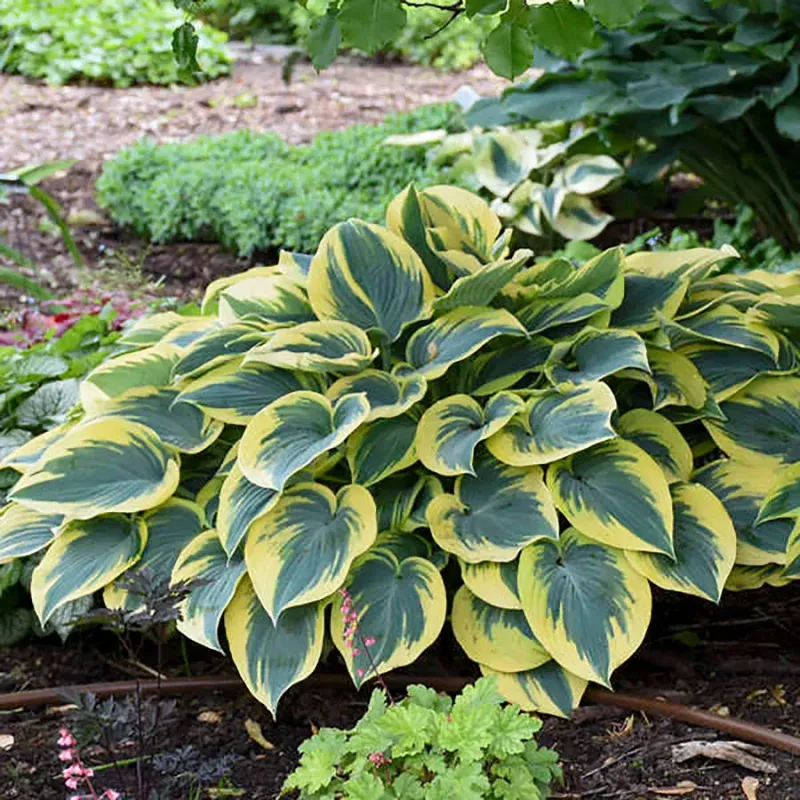
Hostas are known for their lush foliage and low maintenance, making them a staple in Pacific Northwest gardens. These perennials thrive in the region’s damp, shaded environments, where their large leaves provide a rich, green backdrop. Although primarily grown for their foliage, hostas also produce spikes of purple or white flowers, adding seasonal interest. Plant them in well-draining soil with plenty of organic matter for best results. Hostas are ideal for borders, shade gardens, or as ground covers, offering versatility and beauty. Their ability to thrive in challenging conditions makes them a gardener’s ally.
Bluebell
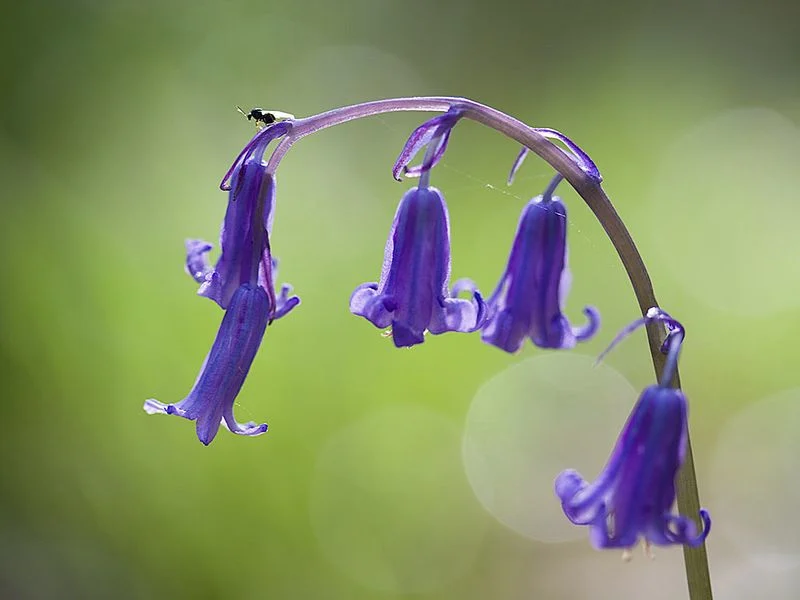
Bluebells create a magical carpet of blue in woodlands and shaded gardens. These spring-blooming bulbs thrive in the Pacific Northwest’s cool, damp climate, where they naturalize easily. The nodding blue flowers appear in mid to late spring, providing a stunning display. Plant bluebells in well-draining, humus-rich soil and allow them to spread for a natural look. Their ethereal beauty and ability to adapt to various garden settings make them a favorite among gardeners. Bluebells not only add color but also attract pollinators, enhancing the biodiversity of your garden.
Tulip

Tulips, with their bold, cup-shaped blooms, are a springtime favorite that adds vibrant color to gardens. These bulbs thrive in the Pacific Northwest, where the cool, rainy climate allows them to flourish. Plant tulips in well-draining soil and full sun for best results. Their wide range of colors and varieties offers endless design possibilities, from formal beds to casual groupings. Tulips are a symbol of renewal and beauty, making them a cheerful addition to any garden setting. Their striking appearance and ease of care ensure they remain a top choice for gardeners.
Daylily
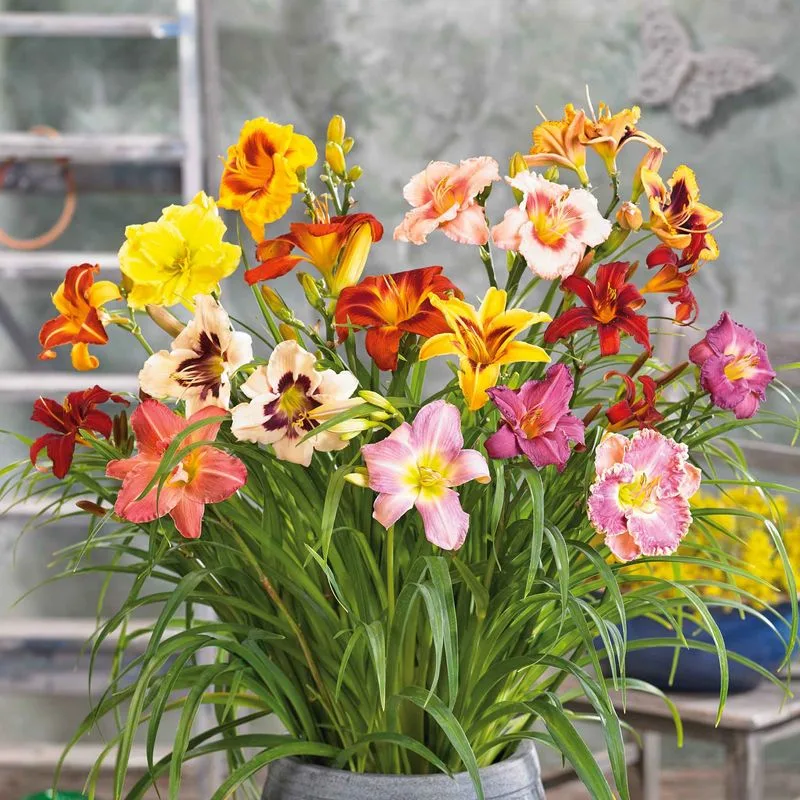
Daylilies, with their trumpet-shaped blooms and long, arching leaves, are a versatile choice for gardens. These hardy perennials thrive in the Pacific Northwest, where they enjoy the mild, rainy climate. Daylilies are known for their ability to adapt to various conditions, making them a reliable choice for gardeners of all skill levels. Plant them in well-draining soil and full sun to partial shade for best results. Their colorful blooms appear in succession, providing a continuous show throughout the growing season. Daylilies are a true testament to resilience and beauty in the garden.
Ghost Orchid
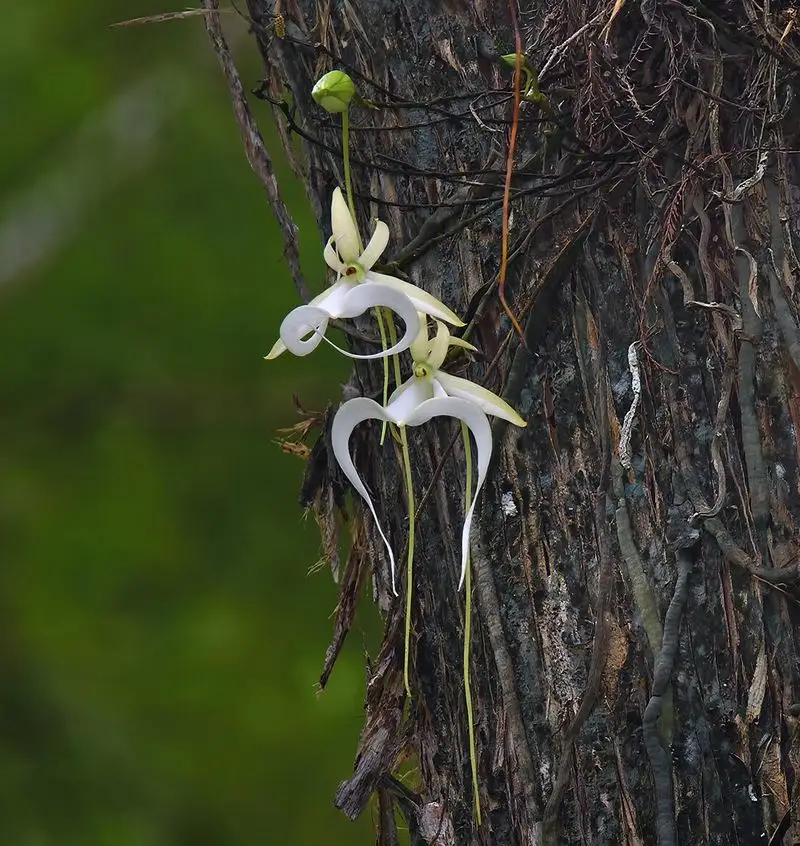
The ghost orchid, floating like a whisper in the breeze, captivates with its ethereal charm. Its delicate, translucent petals seem like nature’s own spectral creation, defying the mundane. Imagine walking through a misty Pacific Northwest forest and stumbling upon this otherworldly bloom.
With a penchant for dark, humid environments, the ghost orchid lures admirers with its elusive beauty. Its rarity only heightens its allure, making each sighting a treasured moment for botanists and flower enthusiasts alike.
Fun Fact: This orchid is famously hard to cultivate outside its natural habitat, adding to its mystical reputation.

